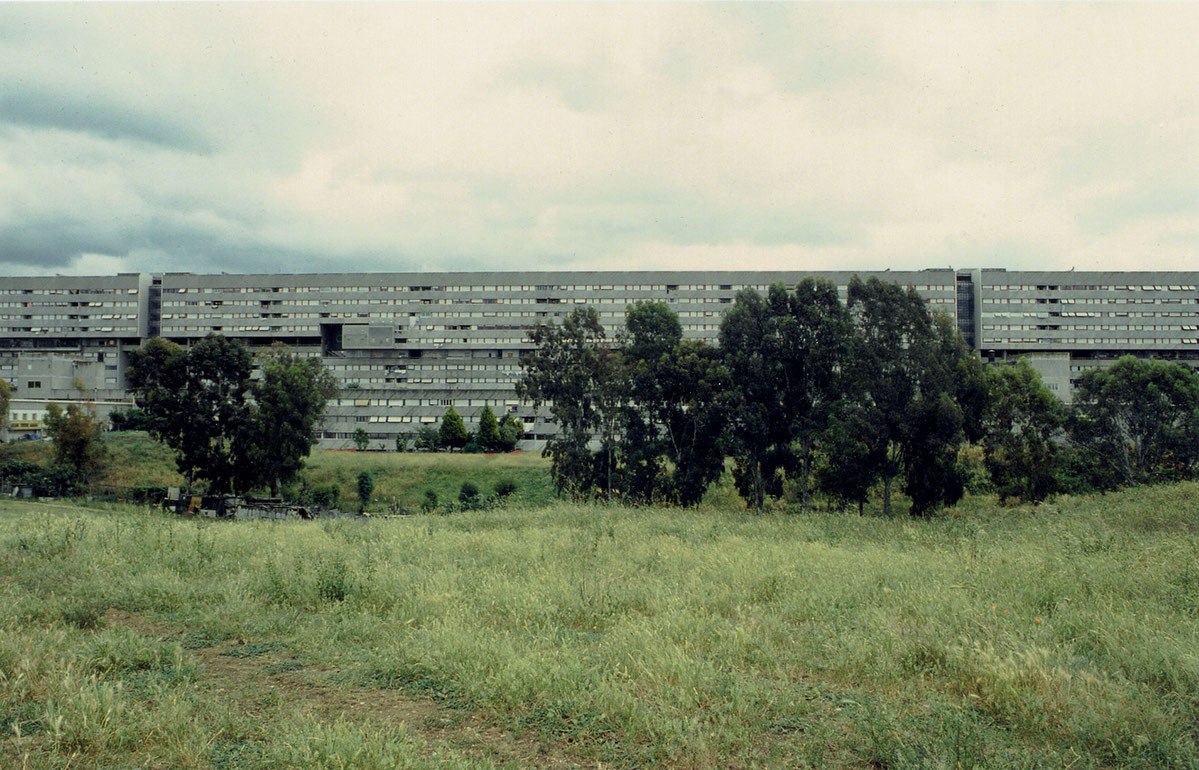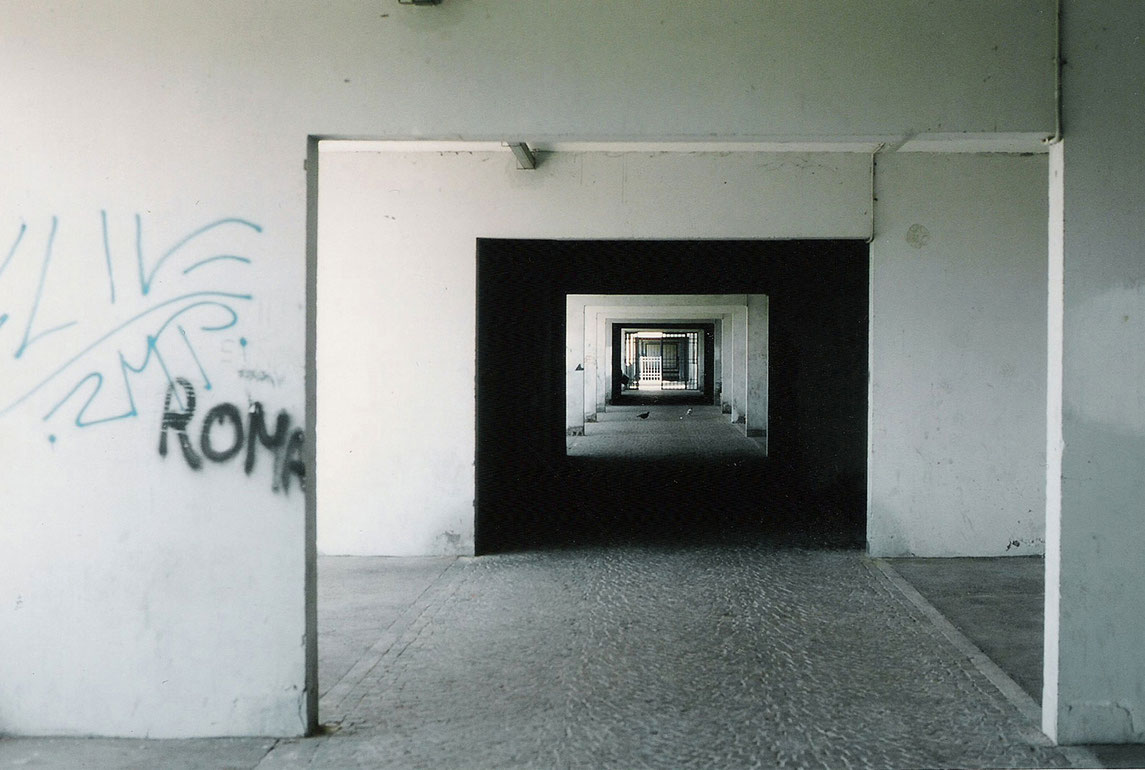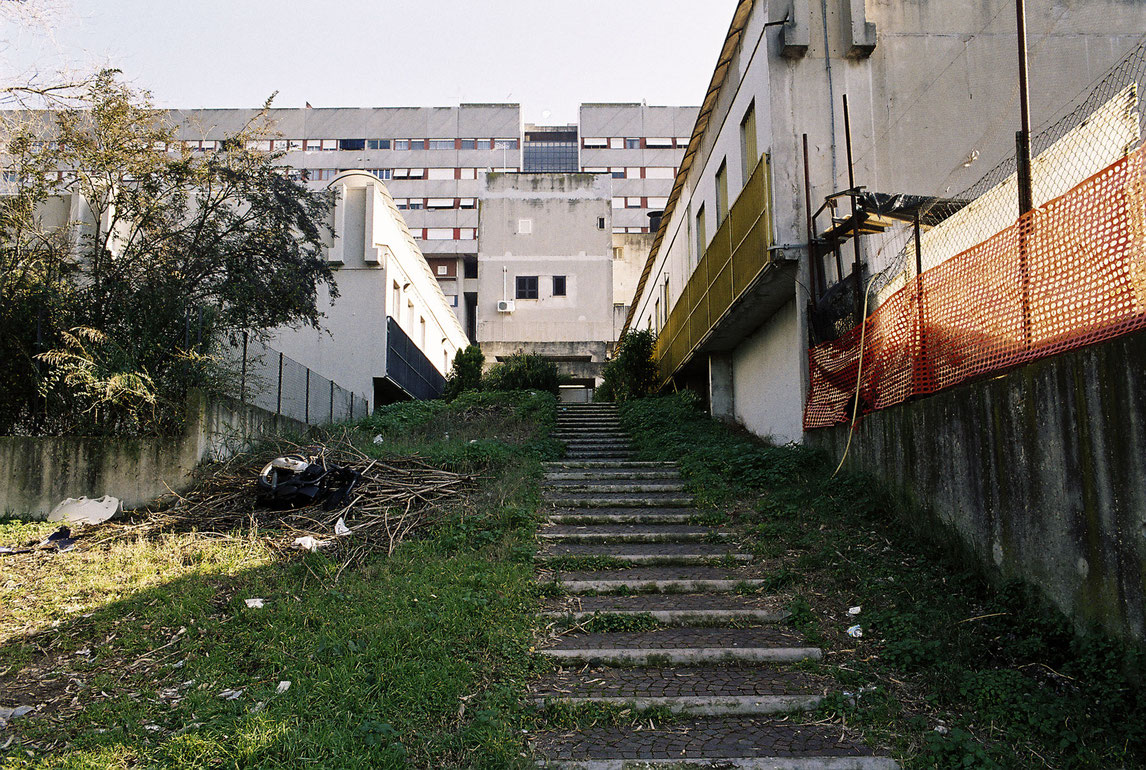Il Palazzo
The protagonist of this film is a building. Standing on the perimeter of Rome like a monolith in the open countryside is a municipal housing complex from the seventies: Corviale. This ravaged concrete structure, which stretches for over a kilometre, has become the embodiment of a failed utopia from an urban planner’s drawing board. Designed as a self-sufficient city, for decades this palazzo (ital.: "building") has largely been left to the devices of its eight thousand residents.
The film interweaves the vistas of this fascinating architectural monstrosity with the ways the inhabitants see their living space. As if the building had a voice of its own, the off-camera reports and tales related by the residents blend to give a polyphonic picture of personal fates intimately linked with the history of Corviale. Gradually a space opens up in which the viewer can reflect on the contradictions that underlie our western metropolises. (Maria Zinfert)
Il Palazzo (Lina Launhardt) - en
“Palazzo“ in Italian means not only palace but also an apartment block or high-rise. But “monstrosity“ is the word the residents use for Corviale, their almost one-kilometre-long residential complex made of reinforced concrete. Inspired by Le Corbusier’s vision of the vertical city, this municipal housing complex was built between the mid-1970s and the early `80s. Rising like a monolith amid the open countryside, and currently populated by some 8,000 people, the construction was never totally completed. Corviale has placed its promise of an urban life space in the hands of the residents, and it is to the great credit of Katharina Copony that her film arrives at its images and stories in precisely this void.
As in a collage, shots capturing the construction’s perspectives, its decaying facade, its interminable passageways, its inhospitality, interlock increasingly with the way the inhabitants themselves see their living place. Their voices come from the off, not many but enough to give a true cross-section. They tell for example of how they were driven from the heart of Rome by the new tenancy laws that came into effect in the early ’80s. Or relate how squatters occupied the fourth storey, which was originally planned as an “inner city” with a shopping mall. The voices remain anonymous, hidden behind the facade, all except that of an old man who, like many others, came to Corviale in the 1980s. The camera accompanies him as he walks about the building, watching on as he tends the plants, feeds the pigeons or looks after feral cats. And continues to follow him as he leaves the building and goes walking in the open fields that adjoin the rear of the building. This figure brings together the various narrative currents in the film as he attempts to overcome the contradictoriness of this place and fill it with life.
“Il Palazzo“ is more than a milieu study or a review of a failed utopia. It is a film about the reclamation and activation of a place that has long since established itself as one of history’s non-places, yet continues to provide its inhabitants with the framework for their lives.
Lina Launhardt
Il Palazzo (Lina Launhardt) - dt
“Palazzo“ ist im Italienischen auch die Bezeichnung für Wohnhaus, Wohnblock. “Ungeheuer“ ist der Name, den die Bewohner von Corviale für ihr nahezu einkilometerlanges Wohngehäuse aus Stahlbeton gefunden haben. Inspiriert von Le Corbusiers Vision einer vertikalen Stadt wurde der soziale Wohnungsbau von Mitte der 70er bis in die frühen 80er Jahre an der Peripherie Roms errichtet. Wie ein Monolith liegt er in freier Landschaft, bis heute leben in ihm etwa 8000 Menschen, er wurde nie gänzlich fertig gestellt. Das Gebäude gilt als Sinnbild einer gescheiterten Architekturutopie so wie es auch Ausdruck einer an den Rand gedrängten Gesellschaft ist.
“Il Palazzo“ ist auch der Titel von Katharina Coponys Dokumentarfilm über den Giganten, seine Bewohner und ihre gemeinsame Geschichte. Das Versprechen eines urbanen Lebensraums hat das Gebäude an seine Bewohner abgegeben und es ist das große Vermögen dieses Films, dass er in dieser Leerstelle zu seinen Bildern und Erzählungen findet.
Collagenhaft verschränken sich Einstellungen von Blickachsen des Gebäudes, seiner maroden Fassade, den endlosen Gängen, seiner Unwirtlichkeit, zunehmend mit den Perspektiven der Bewohner auf ihren Lebensraum. Die Stimmen sprechen aus dem Off, es sind nicht viele, jedoch in ihrer Zusammenstellung repräsentativ. Sie erzählen zum Beispiel von der Vertreibung aus dem Zentrum Roms aufgrund eines neuen Kündigungsgesetzes in den frühen 80er Jahren. Sie sprechen von der Besetzung der vierten Etage, die ursprünglich als “innere Stadt“ mit einer Einkaufspassage vorgesehen war. Man hört von einem Kampf um eine leer stehende Schule, die nun ein Seniorenzentrum ist, errichtet von den Bewohnern, und einer der wenigen sozialen Treffpunkte. Die Stimmen bleiben anonym, hinter der Fassade, bis auf eine, die einem älteren Mann gehört und der wie viele in den frühen 80er Jahren nach Corviale kam. Die Kamera folgt ihm immer wieder auf seinen Wegen durch das Gebäude, man sieht ihn Grünpflanzen auf Geländern und Zierbalkonen pflegen, bei der Taubenfütterung oder Versorgung von wilden Katzen. Auch verlässt man mit ihm das Gebäude, sieht ihn bei Spaziergängen auf freien Feldern, die unmittelbar an die hintere Gebäudefassade stoßen. In seiner Figur verdichten sich die Erzählströme des Films wie er auch die Widersprüchlichkeit dieses Ortes zu überwinden und mit Leben zu füllen versucht.
“Il Palazzo“ ist mehr als eine Milieustudie oder Bestandsaufnahme einer gescheiterten Utopie. Es ist auch ein Film über die Aneignung und Nutzbarmachung eines Ortes, der schon längst als Un-Ort in die Geschichte eingegangen ist, für seine Bewohner aber nach wie vor den aktuellen Rahmen ihres Lebens stellt.
Lina Launhardt
Il Palazzo
2006
Austria, Germany, Italy
45 min



